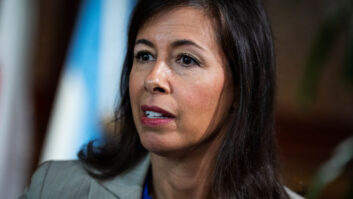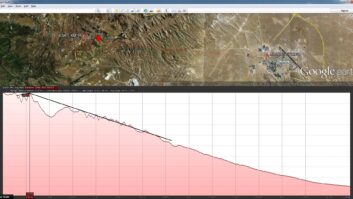The author is the head of Digital Radio Development in the BBC World Service Group and chairman of Digital Radio Mondiale.

As top players in the telecommunications industry are huddling at the World Radio Communication conference in Geneva to discuss spectrum allocation, broadcasters need to stand their ground.
Just the sight of the word “spectrum” may cause you to roll your eyes. But the issues at hand need to be addressed because the consequences of certain decisions could be dramatic for the broadcast industry.
We are told that spectrum is rare and under threat, but who has ever seen spectrum? Like another invisible enabler — electricity, spectrum allows broadcasters to broadcast. And with the advent of the Internet and mobile communication, vast swathes of spectrum in all bands (low and high), as well as satellite, have become more visible, coveted and fought over.
WRC-12 ended dramatically with a notable amount of broadcast spectrum (the 700 MHz band), being assigned to the mobile industry. This was quite an accomplishment for the mobile industry to obtain “territory” that for decades had been the stomping ground for terrestrial broadcasting. It also illustrated the mobile sector’s increasing appetite.
The tussle between broadcastng and mobile services continues in Geneva this month. This time, it’s about the UHF broadcasting bands (470-694/698 MHz, those immediately below 700), and the push to gain territory once again from the telecom “heavies,” whose growth (and revenue) is very attractive to the governments.
Since 2012 the battle lines have been drawn up and at the moment it is clear that more than 630 broadcasters worldwide from Europe, Russia, the Arab States, the Asia-Pacific region and South America, have aligned in defense of maintaining the UHF 470-698 MHz band for terrestrial television and other broadcast uses, as well as the higher frequency satellite bands or a portion of these bands.
They want “no change,” (and you will note which major countries are not mentioned here). But besides this positioning and irrespective of the outcome of WRC-15 — whether there is no or some change — the situation has evolved since 2012.
First and foremost, certain claims made in the name of mobile services have been re-examined. The European Broadcasting Union and its sister organizations contend that WRC-15 decisions should reflect the reality of that fact that more than 95 percent of audio visual content is delivered over broadcast networks and Wi-Fi, rather than over mobile networks. In fact, only 1 percent of the BBC i-Player content (on demand TV) is delivered and consumed on mobile devices.
Terrestrial broadcasting also has been re-examined and the general consensus is that it is still valuable and thus not ready to be replaced by IP and mobile apps. A lot of people, and even the “yoof,” “millennials” or those “super cool creatures” pursued by middle-aged broadcast managers, still rely on linear broadcasting, while complementing it with mobile services, especially if available free of charge.
Broadcasters, feeling the pressure, have started using more compression. They have even abandoned some of the spectrum voluntarily. Digital terrestrial television is using 43 percent less spectrum than it was before mobile companies started showing interest. It is not clear how this will end but probably with an uneasy truce, a hybrid terrestrial-mobile accord at least for the next 10 years.
So what does all this have to do with radio, apart from the name of the conference? At first glance, not much unless after the WRC-15, digital TV slides down on the spectrum scale and reoccupies Band III, putting certain radio digital standards in jeopardy.
But when one takes a closer look, there is perhaps much more lot at stake for audio broadcasting. The current WRC-15 discussions point out that terrestrial broadcasting, whether radio or TV, still has a very strong market position although it needs to innovate, and that the move to digital is inevitable for both TV and radio.
This is interesting (but somehow disturbing) information. If broadcasters — either willingly or forcibly — vacate strips of spectrum, they could be driven to take decisions they might regret one day. No mobile corporation has yet coveted the FM, medium wave, shortwave or longwave bands. Seen as old-fashioned, crackly and expensive, the AM band is being abandoned in some parts of the world, even though it is still adequate, and with the use of digital technologies such as DRM, it has even more potential.
If radio broadcasters give up certain bands, there could very well be no plan B. Broadcasters would then face the risk of extinction rather than have the spectrum they require to satisfy listeners and viewers around the world who still need them for at least another decade.











